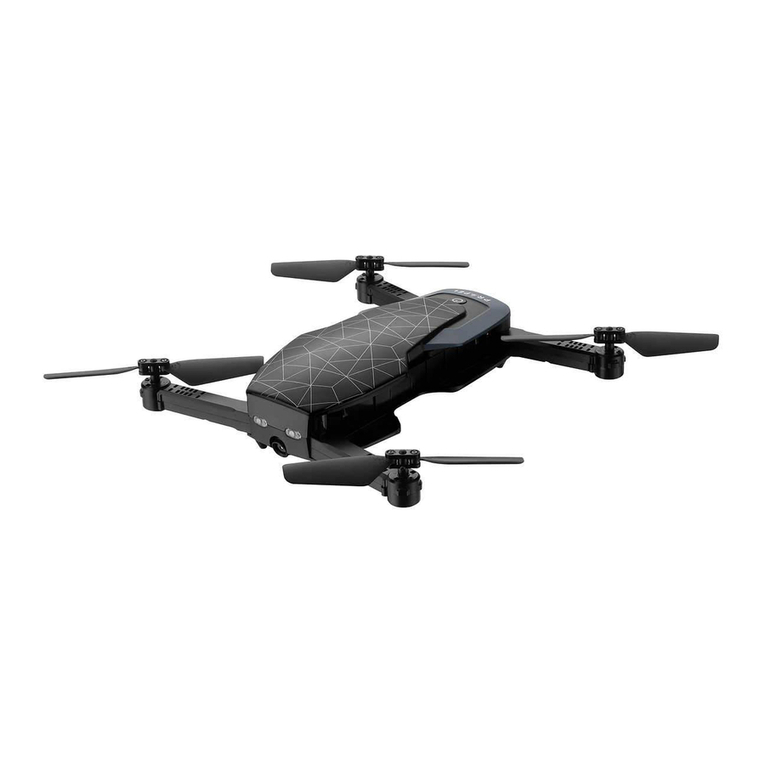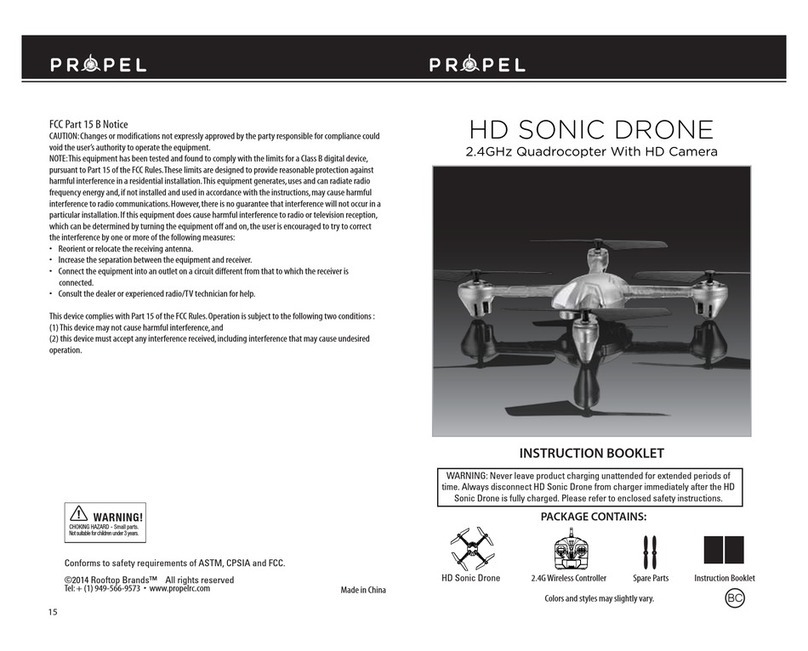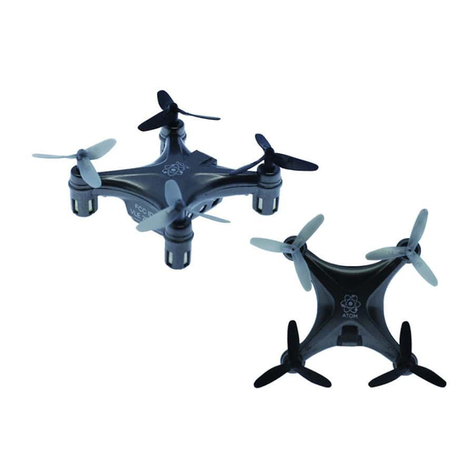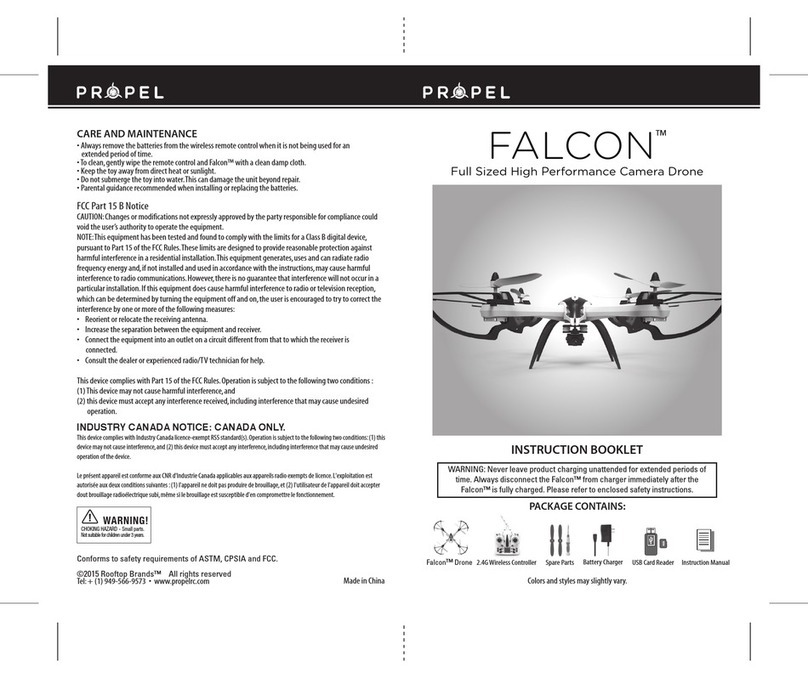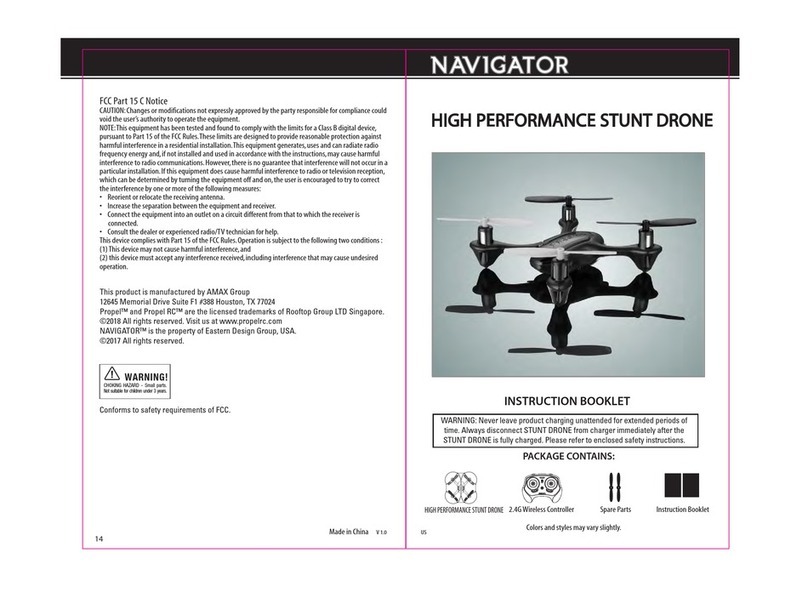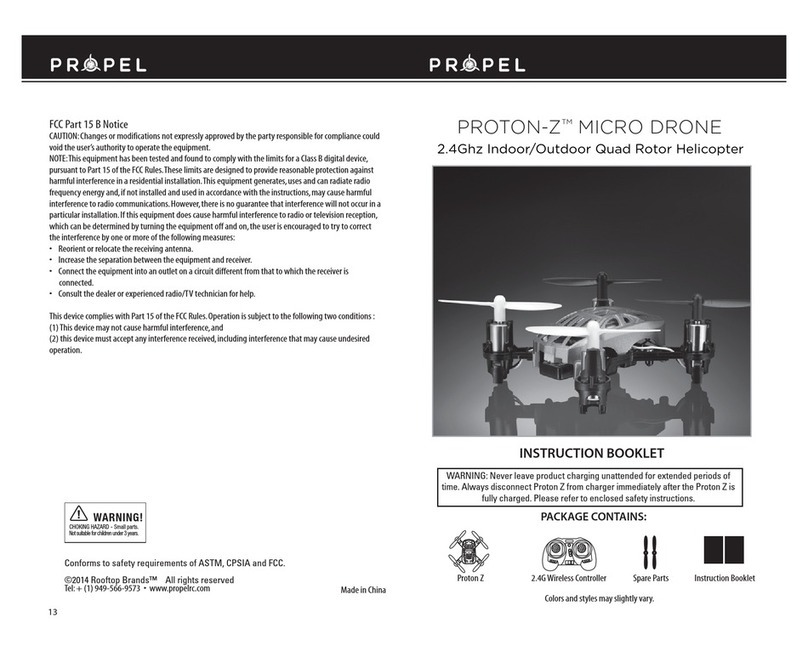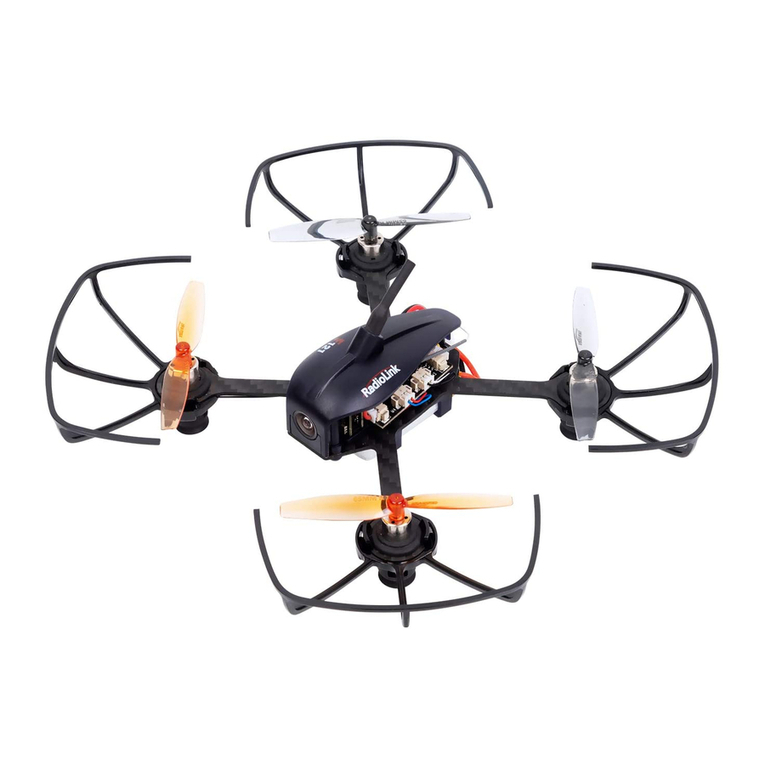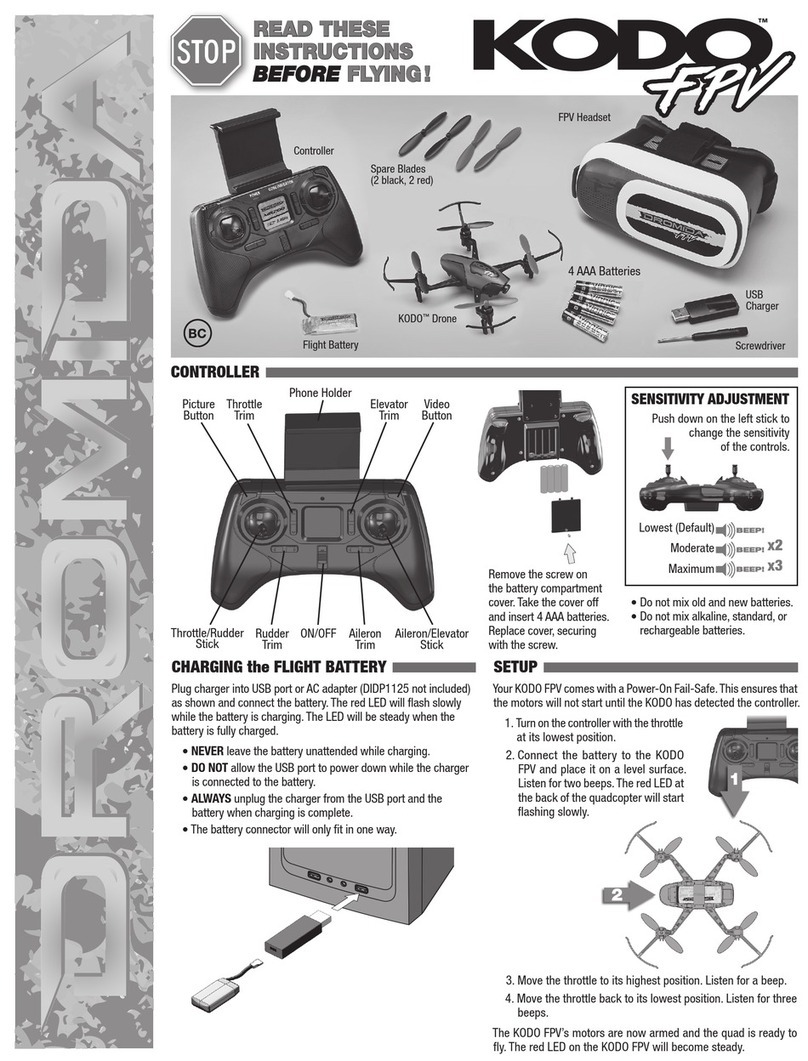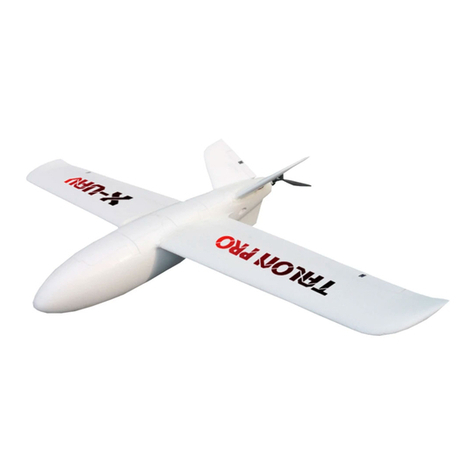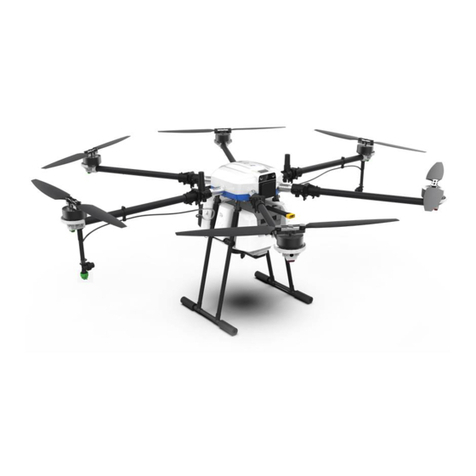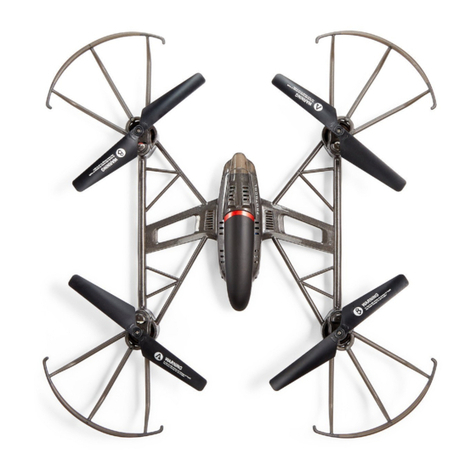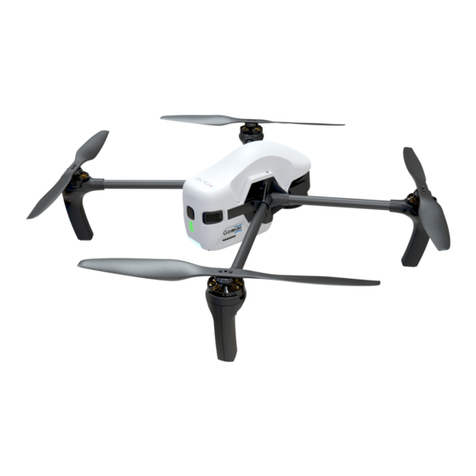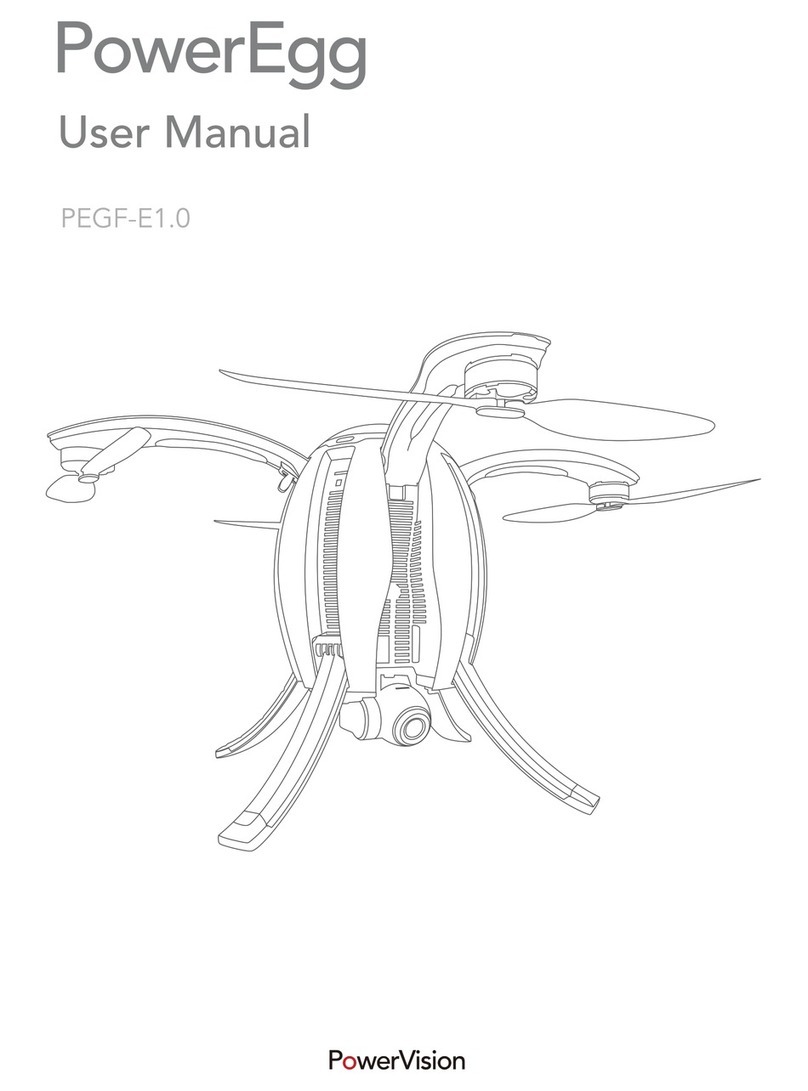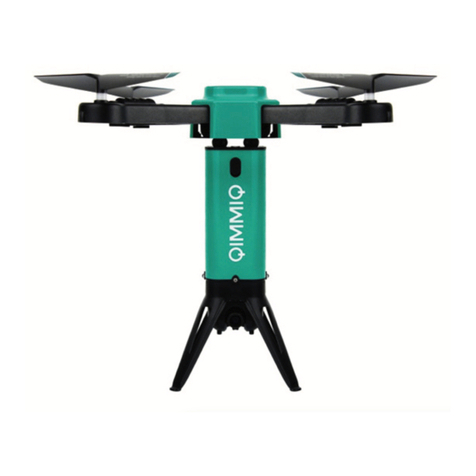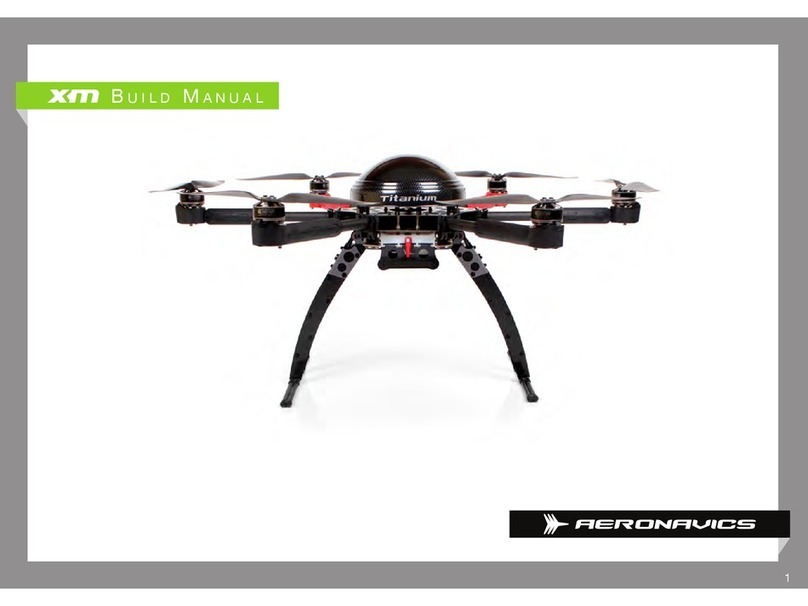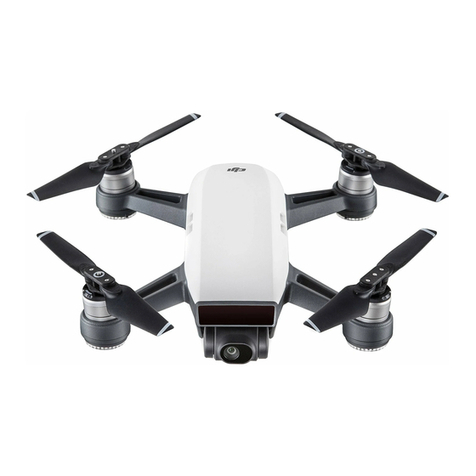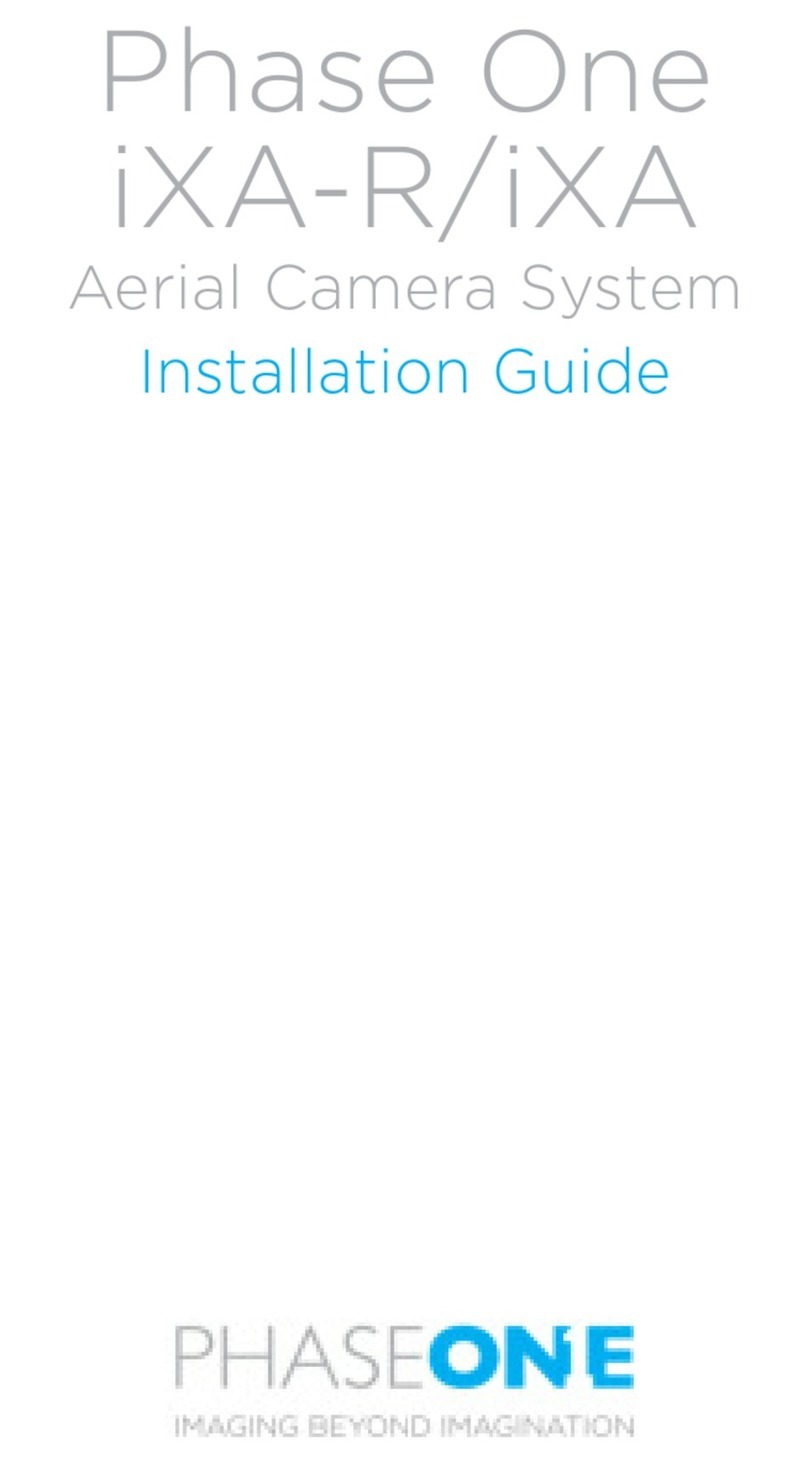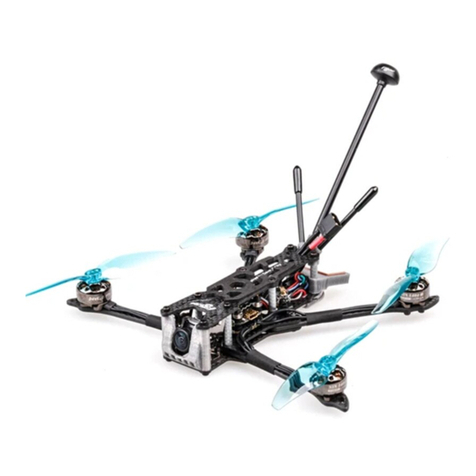Propel RC TILT User manual

Made in China
CAN ICES-3(B)/NMB-3(B)
V1.0
Conforms to safety requirements of FCC.
©2016 Rooftop Brands™ All rights reserved
Tel: + (1) 949-566-9573 • www.propelrc.com
15
WARNING: Never leave product charging unattended for extended periods of
time. Always disconnect the battery from charger immediately after the battery
is fully charged. Please refer to enclosed safety instructions.
INSTRUCTION BOOKLET
PACKAGE CONTAINS:
Colors and styles may slightly vary.
FCC Part 15 C Notice
CAUTION: Changes or modifications not expressly approved by the party responsible for compliance could
void the user’s authority to operate the equipment.
NOTE: This equipment has been tested and found to comply with the limits for a Class B digital device,
pursuant to Part 15 of the FCC Rules. These limits are designed to provide reasonable protection against
harmful interference in a residential installation. This equipment generates, uses and can radiate radio
frequency energy and, if not installed and used in accordance with the instructions, may cause harmful
interference to radio communications. However, there is no guarantee that interference will not occur in a
particular installation. If this equipment does cause harmful interference to radio or television reception,
which can be determined by turning the equipment off and on, the user is encouraged to try to correct the
interference by one or more of the following measures:
• Reorient or relocate the receiving antenna.
• Increase the separation between the equipment and receiver.
• Connect the equipment into an outlet on a circuit different from that to which the receiver is connected.
• Consult the dealer or experienced radio/TV technician for help.
This device complies with Part 15 of the FCC Rules. Operation is subject to the following two conditions :
(1) This device may not cause harmful interference, and
(2) this device must accept any interference received, including interference that may cause
undesired operation.
2.4G Wireless
Controller
Instruction
Manual
Spare Parts USB Card Reader
TILT
™
TILT™
Hybrid Stunt Drone with HD camera and
Altitude Stabilization Technology
PROPEL
AC Charger
& Li-Poly
Rechargeable Battery
ON BOARD
HD VIDEO
ON BOARD
HD CAMERA
1280 x 720 pixel
30 frames per second
INDUSTRY CANADA NOTICE: CANADA ONLY.
This device complies with Industry Canada licence-exempt RSS standard(s). Operation is subject to the following two conditions: (1) this
device may not cause interference, and (2) this device must accept any interference, including interference that may cause undesired
operation of the device.
Le présent appareil est conforme aux CNR d'Industrie Canada applicables aux appareils radio exempts de licence. L'exploitation est
autorisée aux deux conditions suivantes : (1) l'appareil ne doit pas produire de brouillage, et (2) l'utilisateur de l'appareil doit accepter
dout brouillage radioélectrique subi, même si le brouillage est susceptible d'en compromettre le fonctionnement.
Requires Speed Class 6 or higher microSD or
microSDHC card (not included)
microSDHC Logo is a trademark of SD-3C, LLC.
CHOKING HAZARD
-
Small parts.
Not suitable for children under 3 years.
CHOKING HAZARD
- Pièces de petite. taille N’est
pas conçu pour des enfants de moins de 3 ans.
PELIGRO DE ASFIXIA
- Partes pequeñas. No apto
para niños menores de 3 años.
AVERTISSEMENT:
WARNING!
¡ADVERTENCIA!

B
C D
IMPORTANT:ALWAYS REMEMBERTO DISCONNECT YOUR BATTERY CHARGER WHEN NOT IN USE!
Li-Poly
Battery
TABLE OF CONTENTS
Features . . . . . . . . . . . . . . . . . . . . . . . . . . . . . . . . . . . . . . . . . . . . . . . . . . . . . . . . . . . . . . . 2
Remote Control Battery Installation. . . . . . . . . . . . . . . . . . . . . . . . . . . . . . . . . . . . . . . . 2
Charging the TILT
™’s Li-Poly Battery. . . . . . . . . . . . . . . . . . . . . . . . . . . . . . . . . . . . . . . 2
TILT
™ Battery Installation . . . . . . . . . . . . . . . . . . . . . . . . . . . . . . . . . . . . . . . . . . . . . . . . 2
Tilt™ Diagram . . . . . . . . . . . . . . . . . . . . . . . . . . . . . . . . . . . . . . . . . . . . . . . . . . . . . . . . . . 3
Remote Control Diagram . . . . . . . . . . . . . . . . . . . . . . . . . . . . . . . . . . . . . . . . . . . . . . . . . 3
Flight Preparation. . . . . . . . . . . . . . . . . . . . . . . . . . . . . . . . . . . . . . . . . . . . . . . . . . . . . . . 4
Syncing Your TILT
™. . . . . . . . . . . . . . . . . . . . . . . . . . . . . . . . . . . . . . . . . . . . . . . . . . . . . 4
Now You Are Ready To Fly . . . . . . . . . . . . . . . . . . . . . . . . . . . . . . . . . . . . . . . . . . . . . . . . 5
Recognizing The Front & Back Of The TILT
™. . . . . . . . . . . . . . . . . . . . . . . . . . . . . . . . . 5
How to Start/Stop Rotors . . . . . . . . . . . . . . . . . . . . . . . . . . . . . . . . . . . . . . . . . . . . . . . . 5
Speed Select Button . . . . . . . . . . . . . . . . . . . . . . . . . . . . . . . . . . . . . . . . . . . . . . . . . . . . . 5
Auto Land /Take Off Button . . . . . . . . . . . . . . . . . . . . . . . . . . . . . . . . . . . . . . . . . . . . . . 5
3 Channel VS 4 Channel Flying . . . . . . . . . . . . . . . . . . . . . . . . . . . . . . . . . . . . . . . . . . . . 6
3 Channel Flight Control . . . . . . . . . . . . . . . . . . . . . . . . . . . . . . . . . . . . . . . . . . . . . . . . . 6
4 Channel Flight Control . . . . . . . . . . . . . . . . . . . . . . . . . . . . . . . . . . . . . . . . . . . . . . . . . 7
Flight Practice . . . . . . . . . . . . . . . . . . . . . . . . . . . . . . . . . . . . . . . . . . . . . . . . . . . . . . . . . . 7
Adjusting The Trim . . . . . . . . . . . . . . . . . . . . . . . . . . . . . . . . . . . . . . . . . . . . . . . . . . . . . . 8
Calibrating The TILT
™. . . . . . . . . . . . . . . . . . . . . . . . . . . . . . . . . . . . . . . . . . . . . . . . . . . . 9
How To Perform 360º Stunt Rolls . . . . . . . . . . . . . . . . . . . . . . . . . . . . . . . . . . . . . . . . . . 10
Using Your On-Board Camera and Video Recorder. . . . . . . . . . . . . . . . . . . . . . . . . . . . 11
Testing /trouble Shooting The Camera Before Flight. . . . . . . . . . . . . . . . . . . . . . . . . . 12
Removing Your microSDHC Card. . . . . . . . . . . . . . . . . . . . . . . . . . . . . . . . . . . . . . . . . . . 12
Downloading and Clearing Space on Your microSDHC Card . . . . . . . . . . . . . . . . . . . . 12
Troubleshooting Your TILT
™. . . . . . . . . . . . . . . . . . . . . . . . . . . . . . . . . . . . . . . . . . . . . . 13
Replacing The Propeller Blades. . . . . . . . . . . . . . . . . . . . . . . . . . . . . . . . . . . . . . . . . . . . 13
Warnings . . . . . . . . . . . . . . . . . . . . . . . . . . . . . . . . . . . . . . . . . . . . . . . . . . . . . . . . . . . . . . 14
Battery Warnings . . . . . . . . . . . . . . . . . . . . . . . . . . . . . . . . . . . . . . . . . . . . . . . . . . . . . . . 14
Care and Maintenance . . . . . . . . . . . . . . . . . . . . . . . . . . . . . . . . . . . . . . . . . . . . . . . . . . . 14
FCC Information . . . . . . . . . . . . . . . . . . . . . . . . . . . . . . . . . . . . . . . . . . . . . . . . . . . . . . . . 15
Thank you for purchasing the TILT
™
2.4 Ghz Quadrocopter. Please read this instruction booklet as it
contains valuable information on how to properly fly and care for your TILT
™
.
FEATURES
• Wide range digital radio allows flight range up to 500 feet!
• Six axis gyro for extremely stable flight and maneuverability
•
Switch-blade technology allows you to operate in 3ch or 4ch Modes for beginner to advanced pilots
• Push button 360˚ aerial stunts
• On-board camera records high-definition videos and still photos(1280x720 pixel, 30 frames per second)
• Air pressure sensors lock flight altitude for stable video footage
• Automatically lands with the push of a button
• Additional replacement parts included
REMOTE CONTROL BATTERY INSTALLATION
1. Slide off the battery cover from the back of the controller.
2. Install 4 fresh “AA” alkaline batteries into the controller as
shown in diagram A. Replace the battery cover.
3. Turn over the controller and turn the on/off switch to the on
position. If the power indicator turns on you have installed your
batteries properly.
CHARGING THE TILT
™ LI-POLY BATTERY
1. Connect the battery to the battery charger as shown (see diagram B).
2. Next, Plug the AC adaptor into a standard wall socket.
CAUTION: improper connection may damage the battery.
Note: The battery charger has a RED LED indicator light to indicate it is charging.
3. When the battery is fully charged the charging indicator light will change to green.
4. Average charging time is approximately 80-100 minutes. A fully charged drone can fly for
approximately 10 minutes depending on environment and user input.
NOTE: You may purchase additional batteries and chargers at www.propelrc.com
TILT
™ BATTERY INSTALLATION
1. Slide the fully charged battery into the TILT
™’s battery compartment (see diagram C).
The battery is designed to only fit in the compartment one-way, with the guide rail on the bottom of
battery facing downward.
2. Push the battery all the way in and you will hear a click, the drone’s LED lights will light up and
begin flashing when you have installed the battery correctly.
NOTE:The
TILT
™
has no On/Off switch. The drone automatically turns on when the battery is installed.
3. Removing the battery: On the underside of the drone body you will see a small battery eject lever. Using
your finger nail pull the lever up and the battery will eject about 0.5-1cm (see diagram D). Lastly, using
your thumb and forefinger gently pull out the battery.
1 2
4 1.5 volt “AA” Alkaline Batteries
A
B: battery
pop out
CHARGER POWER
AC Adaptor
LED Indicator
A: pull up
A: pull up
B: battery
pop out

34
DO NOT FLY YOUR TILT™ IN FOUL WEATHER!
WARNING
CONTROLLER DIAGRAM
Battery Eject lever
Power Indicator Light
Left Control Stick
Auto Land Button
Forward/Backward Trim
Right Control Stick
Power On/Off
Left /Right
Turn Trim
Left/Right Bank Trim
Rotor Blades
Front (White LED Lights)
Front (White LED Lights)
Back (Red LED Lights)
Back (Red LED Lights)
Landing Gear
Digital Camera
Camera data interface
Still Photo &
Video Recording Button
Speed Button 360˚ Stunt Roll Button
3 CH Mode/ 4 CH Mode
Back of Remote-controller
Camera Indicator Light
Micro SD Card Slot
Microphone
Battery compartment
TILT
™DIAGRAM
FLIGHT PREPARATION
• Verify that there are 4 “AA” batteries inside the remote control unit and the TILT™ has been
fully charged.
• Make sure to be in a large open space preferably a field or a park with an open radius of at least 200 feet.
• Make sure to start your drone on a clean flat level surface before take-off.
•
IMPORTANT! Until you have experience in flying your TILT
™,it is not advised to use in any rate of wind.
Wait until a zero wind day or extremely light wind when learning how to fly.
SYNCING YOUR TILT
™
Important! When syncing yourTILT
™
with the controller always make sure that the drone is on a flat
level surface and that your digital trim settings are in the center position.This insures that the 6 Axis
gyro is properly programmed to respond to your trim settings.Your TILT ™ utilizes an automatic 2.4G
channel selection system that allows up to 8 people to fly side by side in the same wireless range with no
interference.
1. Before starting, make sure that the power switch on your controller is off and the battery is removed
from the TILT ™. Make sure that there are no other 2.4G devices in the area.
2. Insert the battery into the TILT ™ and set it down on any flat surface. The red and white LED lights on
top of the drone should begin to flash repeatedly.
3. Quickly turn ON the remote and you will notice that the top red LED light on the face of the controller
should also be flashing.
4. Push the left control stick all the way up until it stops and then pull it back all the way down to the
bottom(see illustration below). When pulling the stick down to the bottom you should hear a
high-pitched beep and the lights on both the drone and the controller should stop flashing and become
solid. If the lights on both the
drone and the controller have stopped flashing and become solid you have
successfully synced your
TILT ™
and are ready to fly. If the lights on the controller or the drone are still
flashing repeat steps 1-4 again.
•
TIP 1: Try not to leave too much time between putting your battery into the drone
and turning on the controller or your syncing window will time-out.
• TIP 2: Syncing your drone indoors or in the shade will make it easier to see the LED
light indicators on both the controller and the drone.
Move the control stick all the way
up and all the way down, you
should hear a beep
The flashing red LED light will
become solid when you are
synced
1 2 3
4CH3CH
Speed Indicator

5 6
E
F
G
H
3 CHANNEL FLIGHT CONTROL
Below is a list of basic flight functions for your long-range remote to control the TILT ™. While learning to fly
your TILT ™ it is best to start in a large space with the drone facing away from you until you get used to the
basic controls. As you master flying your TILT ™ you can move to more advanced maneuvering techniques.
Practice makes perfect! When you have these basic steps down you can move to the next level.
Move the left Throttle stick up to increase the
propeller speed and the TILT ™ will accelerate
and ascend.
Move the left Throttle stick down to decrease the
propeller speed and the TILT ™ will decelerate
and descend (see diagram F).
While in the air, move the right Direction Stick up
and the TILT ™ will move forward.
Move the right Direction Control down and the
TILT ™ will move backward (see diagram G).
While in the air, move the right Direction Control left
and the TILT ™ will spin to the left.
Move the right Direction Control right and the
TILT ™ will spin to the right (see diagram H).
3 CHANNEL VS 4 CHANNEL FLYING
Propels unique “switch-blade” technology allows you to choose between 3ch or 4ch flight control modes.
Most people with no experience in flying multi copters may find 3ch easier to learn at first as controls are
set up to simply move forward, back, turn left and turn right. 4channel flying gives the operator ultimate
control by adding two more dimensions of flight, banking left and banking right.
To change to 3 Channel mode:
Switch the 3/4 CH. button to left side on the back of controller (see remote diagram on pg 3), you will hear
3 “beeps” indicating the TILT ™ now is set to 3 CH. mode.
To change to 4 Channel mode:
Switch the 3/4 CH. button to right side on the back of controller (see remote diagram on pg 3), you will hear
4 “beeps” indicating the TILT ™ now is set to 4 CH. mode.
NOW YOU ARE READY TO FLY!
If you have successfully synced your TILT ™ to your controller as explained on page 4 you are now ready to
fly. Before beginning to fly your drone you should familiarize yourself with how to start and stop the rotors,
how to use your auto land feature and how the controls work so please carefully read and familiarize
yourself with various control features explained in the next few pages. Once again as a beginner pilot you
should learn how to control your drone in a large open field or park on a day with zero or very light wind.
Do not try to fly your Tilt™ too high until you become a more experience pilot.
HOW TO START/STOP ROTORS
Make sure you have properly synced the TILT ™ and the power is on.
• To start and stop the rotors simply move the two control sticks either simultaneously down and to the
inside or down and to the outside corners and hold for one second (see illustration below).
• Once the rotors begin to spin, release the control sticks and they will return to the center position. Now
you are ready for take-off.
SPEED SELECT BUTTON
The TILT ™ has 3 speed settings; 1 (SLOW), 2 (MEDIUM) and 3 (HIGH). The Default setting when you first
turn on your TILT ™ is the 1 (SLOW) speed mode. To increase the speed simply trigger the speed setting
button (see remote diagram on pg 3) you will hear a beep and the speed setting indicator on the face of the
controller will show you what speed setting you are on. Speed settings can be set before flight or during the
flight.
AUTO LAND BUTTON /AUTO TAKE OFF
The TILT ™ has an auto land and auto take off feature which allows you to land or take off automatically.
Simply press the Auto Land Button and your TILT ™ will begin land or take off by itself.
Note: you can still control the direction while auto landing or taking off to avoid obstacles
Note: Either position will both start and stop the rotors so use the position you are most comfortable with.
RECOGNIZING THE FRONT & BACK OF THE TILT
™
Even though the TILT ™ has four rotors there is still a front or "forward" facing direction and "back" or
backwards facing direction. The Front and forward facing direction of the TILT ™ is the side with two EYES
(see diagram E ). The rear and back of the Quadrocopter is the side with battery compartment (see diagram E).
NOTE:The front of the Quadrocopter also displaysWHITE LED light and the back of the Quadrocopter displays
RED LED lights.
FRONT
REAR

7 8
M
N
O
P
I
J
K
L
4 CHANNEL FLIGHT CONTROL
Below is a list of basic flight functions for your long-range remote to control the TILT ™. While learning to
fly your TILT ™ it is best to start in a large space with the drone facing away from you until you get used to
the basic controls. As you master flying your TILT ™ you can move to more advanced maneuvering
techniques. Practice makes perfect!
Move the left Throttle stick up to increase the
propeller speed and the TILT ™ will accelerate and
ascend.
Move the left Throttle stick down to decrease the
propeller speed and the TILT ™ will decelerate
and descend (see diagram I).
While in the air, move the left Throttle stick left
and the TILT ™ will rotate left.
Move the left Throttle stick right and the
TILT ™ will rotate right (see diagram J).
While in the air, move the right Direction Stick up
and the TILT ™ will move forward.
Move the right Direction Control down and the
TILT ™ will move backward (see diagram K).
While in the air, move the right Direction Control left
and the TILT ™ will bank to the left.
Move the right Direction Control right and the TILT ™
will bank to the right (see diagram L).
FRONT
REAR
Forward/Backward Trim
• If your TILT ™ drifts forward while in the
air, push and release the FORWARD/BACKWARD
TRIM button backward repeatedly until the motion
stops and proper flight is maintained (see diagram M).
• If yourTILT ™ drifts backwards, push and
release the FORWARD/BACKWARD TRIM button
forward in the same manner until the problem is
resolved.
Bank Right/Left Trim
• If your TILT ™ drifts / banks left while in the
air, push and release the BANKS TRIM button to the
rightside repeatedly until the motion stops and
proper flight is maintained (see diagram N).
• If your TILT ™ drifts right, push and release the
BANKS TRIM button to leftside in the same manner
until the problem is resolved.
Spin Left Trim
• If your TILT ™ spins left while in the
air, push and release the LEFT/RIGHT TURN TRIM
button to the rightside repeatedly until the motion
stops and proper flight is maintained
(see diagram O).
Spin Right Trim
• If your TILT ™ spins right while in the
air, push and release the LEFT/RIGHT TURN TRIM
button to the leftside until the problem is resolved
(see diagram P).
ADJUSTING THE TRIM
NOTE: The TILT ™ is already properly trimmed and calibrated right out of the box and should not require any
trim adjustments before flying. Some more experienced pilots may want to adjust trim settings for their
style of flying. After several crashes you may need to adjust trim settings for the TILT ™ to be more
balanced.
NOTE: The use of theTrim buttons utilizes sounds.A single long Beep indicates the product is
center trimmed.Continuous long Beeps indicate the product is trimmed to the maximum on a
particular side.
Fixed-point landing Square Pattern Maneuver Cross Pattern Maneuver
FLIGHT PRACTICE
To master flying your aircraft try practicing the excersizes shown below. Start with simple vertical takeoffs,
landings, and left/right turning and rotating. Once those are mastered move on to square and cross
maneuvers. Good luck and have fun!

910
360˚Stunt Roll Button
TS
R
HOW TO PERFORM 360º STUNT ROLLS
Performing 360º stunt rolls with the TILT ™ is as easy as 1-2-3:
1. Hover the TILT ™ in still position making sure that you have at least 5 feet of clearance above
and below the quadrocopter, Set the speed settings to mode 2 or 3.
2. Press the 360 stunt button down and you will enter the stunt roll mode which is indicated by a rapid
beeping (see diagram S).
3. Determine which direction you want it to flip and quickly push the right control stick in the direction
you want to flip your TILT ™ (see diagram T).
You have 4 choices a) Forward roll, b) Backwards roll, c) Right side roll, d) Left side roll.
CALIBRATING THE TILT™
NOTE: Your TILT
™ comes pre-calibrated out of the box so you are ready to fly.
After several crashes and shock to your gyro sensors, you may notice that your drone is drifting and not
holding its center position as well as it used to.
This most likely means that you need to recalibrate the 6 axis gyro. Please follow the simple instructions
below.
1. Place the TILT
™ on a level surface
2. Make sure the TILT ™ is on and that the controller is synced (refer to syncing pg 4. ). Do not start the
blades. Instead move both the throttle and control stick down and to the right corner and hold them
there for 5 seconds(See Diagram R). You will see the lights on the drone rapidly flash and stop. Once the
lights stop flashing you have completed your calibration and are ready to fly!
TROUBLE SHOOTING: If you do not see the lights flash, first remove the battery from the drone then turn off
your controller and start again. Always make sure to put your battery in first, then turn on your controller.
Push the left throttle stick up all the way and then pull back down again. When you hear the beep the TILT™
is synced to the controller and you are ready to calibrate.

Camera LED Light
Microphone
microSDHC card facing down
microSDHC card
goes in back slot
Diagram U4Diagram U3Diagram U2Diagram U1
11 12
IMPORTANT NOTICE :You can not take photos and videos at the same time.When you are in video mode
your camera/ photo button is disabled.If you want to take photos you must first turn off video mode.
USING YOUR ON-BOARD CAMERA AND VIDEO RECORDER
Your TILT ™ comes equipped with an onboard digital camera(1280x720 pixel, 30 frames per second) that takes
both video and still photographs. Now you can have hours of fun creating aerial photography and videos for family
and friends.
WHATYOUWILL NEED TO GET STARTED USING YOUR CAMERA
1. One microSDHC card (included)
2. One microSDHC card reader (included)
3. A Computer with a USB port and Windows Media Player or other Media player that can play AVI files(not included).
FORMATTING YOUR MICROSDHC CARD
Before you can begin to take videos or digital photographs you must first format your microSDHC card. To
format your microSDHC card simply place the microSDHC card into the included USB SD card reader and
plug it into your computers USB port (See diagram U1 and U2 below). After a few moments an icon will
appear on your Desktop. Right click on the Icon and follow instructions to format your microSDHC card.
INSTALLINGTHE MICROSDHC CARD INYOUR TILT™
•
Place the formatted
microSDHC
card into the back of the
Tilt™
digital camera port (see diagram U3
below).
Push gently until you hear and feel the microSDHC card “click” into the digital camera slot.
• Turn theTILT ™ on and make sure that it is both fully charged and properly synced to the
Controller (see HOW TO SYNC YOUR QUADROCOPTER on page 4 ).
• When you have successfully installed your microSDHC card and your TILT ™’s battery, you will see
a solid red LED light on the camera unit underside (see camera indicator light diagram U4 below).
NOTE: If you see a red LED light flashing this indicates you have not installed your Micro SD card correctly
or there is a problem with your SD card. If this happens please reformat and try again. If you continue to
encounter problems call our customers service line at (949) 566-9573 Ext 1 for assistance.
TAKING DIGITAL PHOTOS
To take photographs quickly press and release the CAMERA button on the top right side of the controller
(refer to CONTROLLER DIAGRAM on pg. 3), when you push the button you will hear a "beep" and the green
led light on the camera will flash 3 times indicating that a picture has been taken.
RECORDING VIDEOS
To begin recording a video depress and hold down CAMERA button for 2 seconds. You will hear two "beeps"
and the green LED light on the camera start flashing to indicate that you are in video mode and the camera
is recording. To stop the video recording, press and hold the CAMERA button a second time, you will hear
two “beeps” to indicating that the video recording has stopped and the Camera is in ready mode again.
TESTING /TROUBLE SHOOTINGTHE CAMERA BEFORE FLIGHT
It's a good idea to test that your camera is working before beginning flight.
Start by making sure that you TILT ™ is properly synced to the controller (see How to Sync pg 4). Note: there
is no need to start the rotors as the camera function is a separate system. You only need to be synced.
1. Turn the drone upside down (it is recommended to just hold in your hand) and insert a microSDHC card.
The micro SDHC card can only fit in one way so do not force it. When the micro SDHC card is installed all the
way you will hear a “Click” sound and a flashing Red LED light should stay solid on the belly of the camera
(see Camera Diagram W4). The solid red light indicates that you have properly installed the microSDHC card
and are ready for taking pictures and videos. If you don’t see the solid red LED indicator light then start
again. Remember to make sure that the drone and controller are properly synced and that the microSDHC
card is inserted until you hear a “click”
2. Testing the Still Photo Feature: Keeping the drone upside down, quickly depress and release the
CAMERA button on the top right hand side of the controller. A green LED should appear and flash 3x.
Congratulations you just took a picture and tested your camera. If you did not see 3 green lights flash then
you must start again from the beginning.
3. Testing the Video Recording Feature: Keeping the drone upside down, depress and hold down the
CAMERA button for 2 seconds. A green LED light on the camera belly will appear and begin to flash
continuously. This means that you are recording video. To stop recording video simply press and release the
Camera button one more time and the Green LED light should off, indicating that the camera is once again
in ready mode.
REMOVINGYOUR MICROSDHC CARD
To remove your microSDHC Card push in gently on the back of the microSDHC card with your thumb or
forefinger until you hear and feel a “clicking sound”. The microSDHC card will “pop-out” slightly and is ready
for removal. Simply grab and pull gently away from the Tilt™’s camera port to remove the card. Always store
your microSDHC card in a clean, safe and cool environment.
DOWNLOADING AND CLEARING SPACE ONYOUR MICROSDHC CARD
Plug your microSDHC card into the microSDHC card reader and connect to your computer. It is best to
always download all your videos and pictures on to your computer and not store this data on your
microSDHC card. After downloading your photos and videos , follow your computers instructions to “delete”
files on your microSDHC card.
IMPORTANT NOTICE:When your microSDHC card is full the indicator light on the bottom of your
helicopter will not flash when you press the photo or video record buttons.This indicates that its time
to put a new microSDHC card in yourTilt™ or download files and clear space for future photos and
videos.

TILT™ WARNING:
The Tilt™ is designed for OUTDOOR use. The Tilt™’s blades revolve at high speeds and can cause damage to
the user, spectators and animals. Stand away from the Tilt™ to reduce the risk of getting into the flight
path. Warn spectators that you will be flying your Tilt™ so that they are aware of its position. Before flight,
inspect the rotor blades to make certain that the blades are securely fastened to the Tilt™.
WARNING!
• Choking/Cutting Hazard. Small Parts/Sharp Rotor Blades.
• Keep hands, hair and loose clothing away from the propeller when the power switch is turned to the
ON position.
• Turn off the transmitter and Tilt™ power switches when not in use.
• The included charger is built specifically for the Tilt™ Li-Poly battery. Do not use it to charge
any other battery.
• New alkaline batteries are recommended for maximum performance.
• Parental supervision recommended when flying Tilt™.
BATTERY WARNINGS
RECHARGEABLE BATTERY:
This Tilt™ uses a Li-Poly rechargeable battery. If battery no longer stays charged, dispose of battery
properly according to local disposal requirements.
CONTROLLER BATTERIES:
Remote control requires 4 “AA” batteries (not included).
Please read the important battery safety warning below.
• Do not mix alkaline, standard (carbon-zinc) and rechargeable batteries (Nickel Metal Hydride).
• Do not mix old and new batteries.
• Non-rechargeable batteries are not to be recharged.
• Rechargeable batteries are to be removed from the item before being charged (if removable).
• Rechargeable batteries are only to be charged under adult supervision.
• Exhausted batteries should be removed immediately and must be recycled or disposed of properly
according to state or local government ordinances and regulations.
• The supply terminals are not to be short-circuited.
• Only batteries of the same or equivalent type as recommended are to be used.
• Batteries are to be inserted with the correct polarity (see inside booklet for diagram).
• Do not dispose batteries in a fire - batteries may leak or explode.
CARE AND MAINTENANCE
• Always remove the batteries from the wireless remote control when it is not being used for an
extended period of time.
• To clean, gently wipe the remote control and Tilt™ with a clean damp cloth.
• Keep the toy away from direct heat or sunlight.
• Do not submerge the toy into water. This can damage the unit beyond repair.
• Parental guidance recommended when installing or replacing the batteries.
V
Front
Blade Front Left = 2
Blade Front Right = 3
Blade Back Left = 3
Blade Back Right = 2
13 14
REPLACING THE PROPELLER BLADES
Your
Tilt™’s
propeller system is a precision instrument that may need repair or replacement from time to
time for optimal flight function. Crash landing at high-speed may cause damage to your Tilt™’s propellers.
1. The Tilt™ has four blades, two blades with indication number 2 & 3 on front, and two blades with
indication number 3 & 2 on back (see the diagram V).
2. When replacing the propeller blades, make sure to match the indication number on the blade.
3. Replace the damaged blade with the correct blade.
PROBLEM POSSIBLE CAUSE POSSIBLE SOLUTION
1. Power switched off 1. Switch the ON/OFF switch to ON
No Power 2. Polarity is reversed 2. Make sure all batteries are installed
correctly (see diagram A)
3. Batteries may be low or in need of charging 3. Replace batteries
1. Remote is switched off 1. Switch the ON/OFF switch to ON
Aircraft Not 2. Battery power in remote is too weak 2.Connect the battery to Tilt™
Responding 3. The remote is not properly synced 3. Re-sync the remote
4. Out of control range 4. Do not fly beyond 500 feet
Aircraft Won’t 1. Rotor speed too slow 1. Push throttle lever forward
lift off 2. Aircraft not fully charged 2. Recharge your Tilt™
3. Obstruction of rotors
3. Check rotors for hair or other obstructions
Aircraft
Descends 1. Moving the throttle down too quickly
1.
Control the throttle slower/use auto land feature
Too Fast 2. Flying in high wind or bad weather 2.Do not fly in bad weather
TROUBLESHOOTING YOUR TILT™
2
2
3
3
If you continue to encounter problems call our customers service line at (949) 566-9573 Ext 1 for assistance.
Table of contents
Other Propel RC Drone manuals
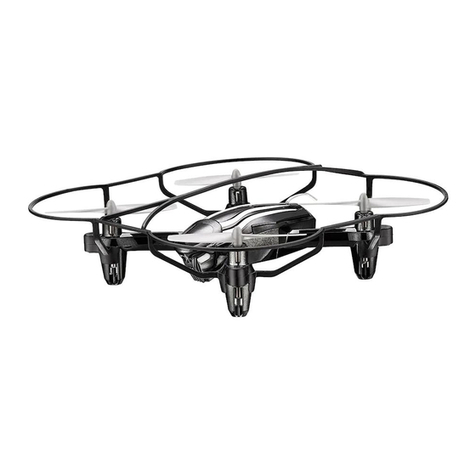
Propel RC
Propel RC SPYDER X User manual
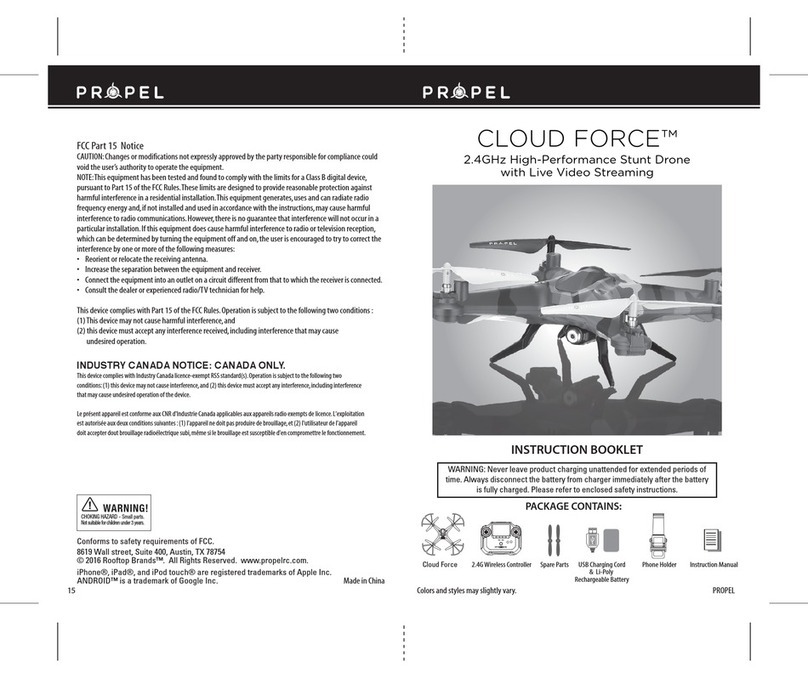
Propel RC
Propel RC cloud force User manual
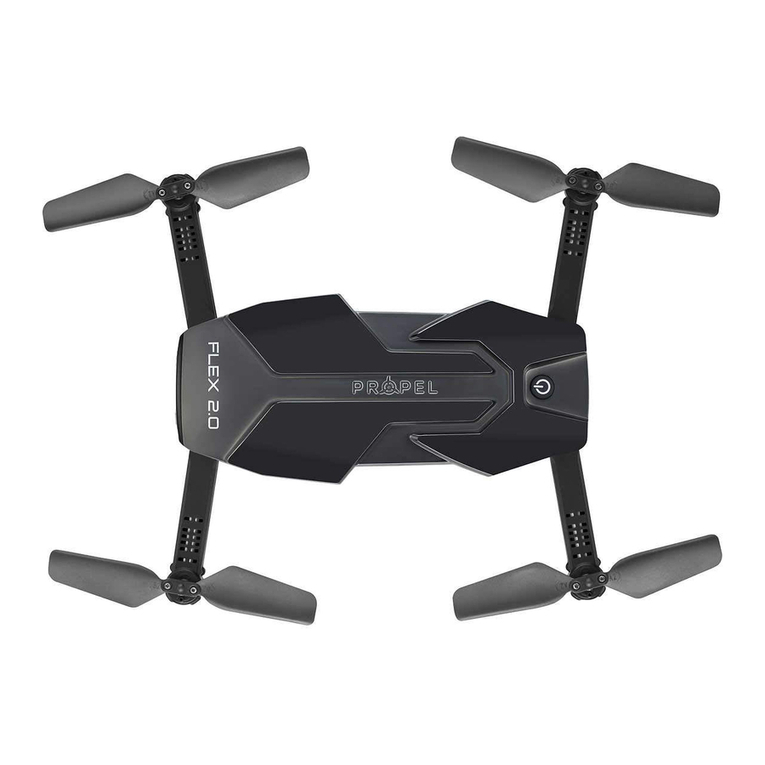
Propel RC
Propel RC FLEX 2.0 User manual
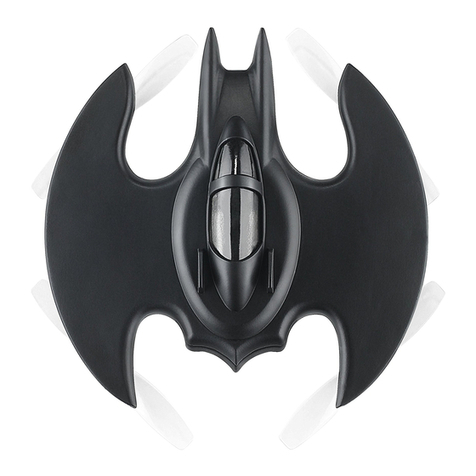
Propel RC
Propel RC BATWING User manual

Propel RC
Propel RC SPYDER XL User manual
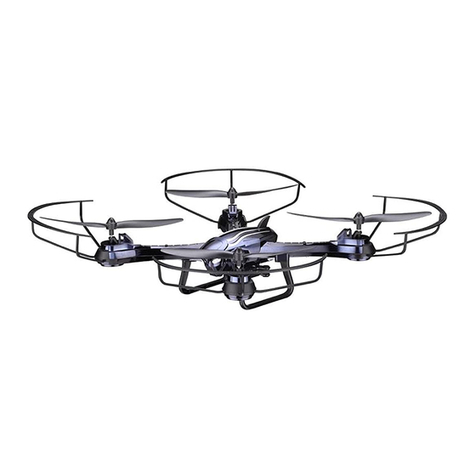
Propel RC
Propel RC Spyder XL User manual
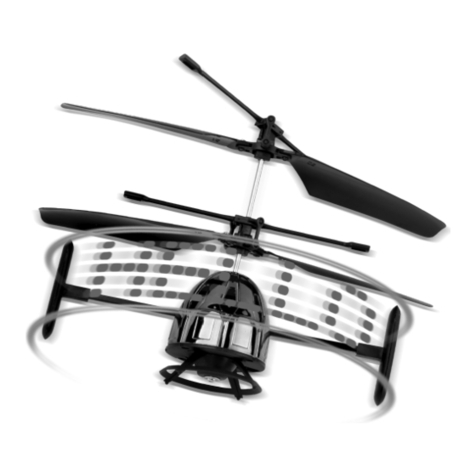
Propel RC
Propel RC SKYWRITER UFO User manual
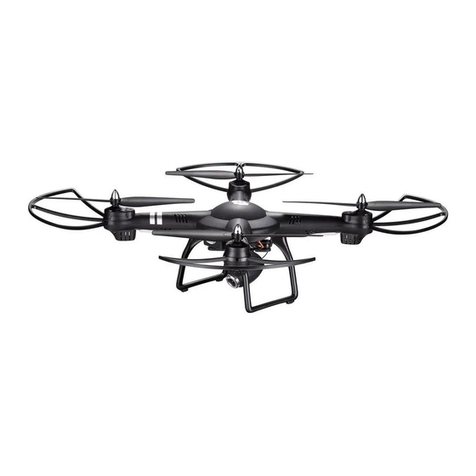
Propel RC
Propel RC sky master+fpv User manual
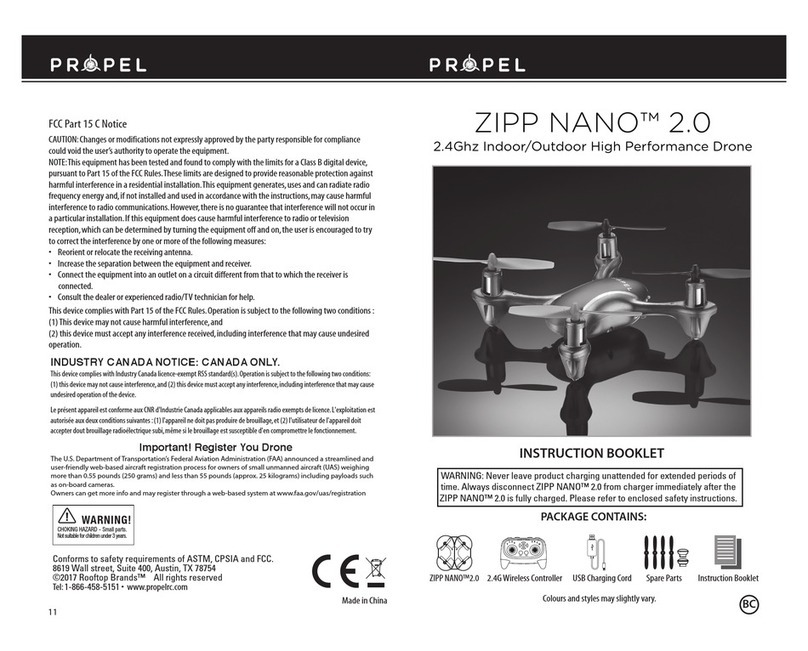
Propel RC
Propel RC ZIPP NANO 2.0 User manual
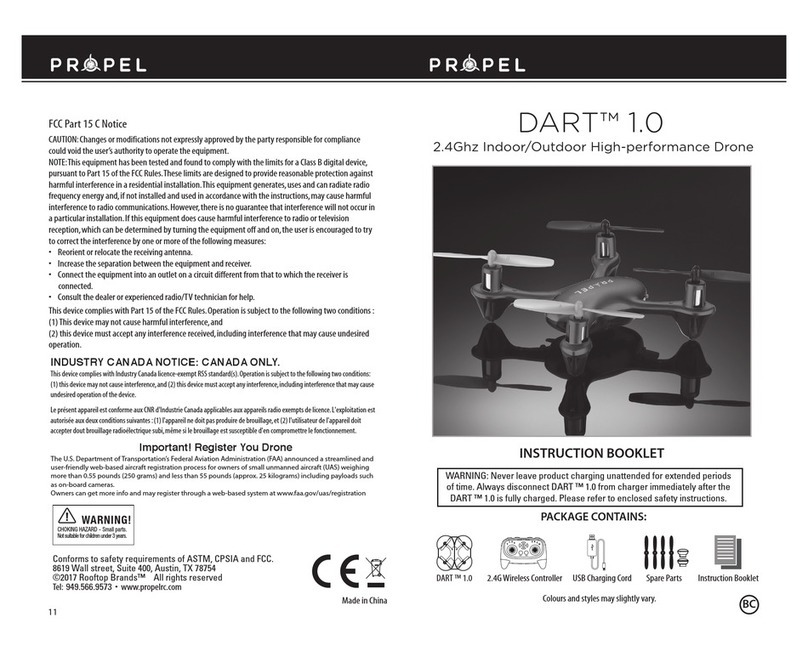
Propel RC
Propel RC DART 1.0 User manual
